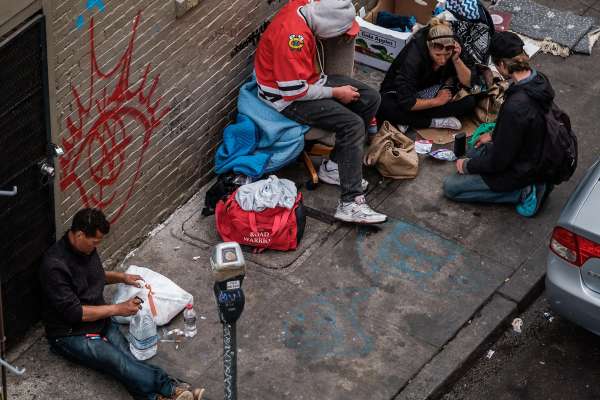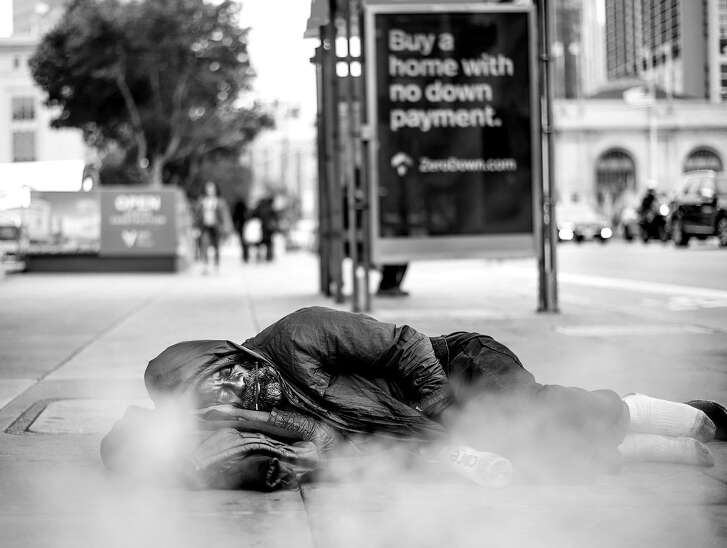Drug treatment admissions dropping in SF even as overdoses spike. Here’s why


Admissions to addiction treatment programs in San Francisco have dropped by 20% over the past five years, even as drug use and overdose deaths have exploded, according to public health data published this week.
Combined with recent reports of treatment center vacancies — on some nights, one in four beds are empty in San Francisco’s residential treatment facilities — the admissions data suggests that certain addiction programs are being underutilized at a time when the city is in a drug use crisis, some public health and elected officials say.
But much of the decrease in admissions may be explained by people seeking other types of addiction services that don’t require residential care. The data alone may not paint a full picture of a public health issue that is complex and currently in flux, addiction experts said.
“I’m not going to say the numbers are concerning, because I’m not sure yet what it all means,” said Dr. Phillip Coffin, director of substance use research for the San Francisco Department of Public Health, and author of a report out this week on drug use trends in the city. “Treatment programs are essential and important, and they’re only one element of the services that need to be provided, which are going to vary based on individual patient needs.”
Drug overdoses are a public health crisis in San Francisco — a Board of Supervisors committee passed a resolution saying as much on Thursday. The number of overdose deaths has been rising steadily, with roughly 230 deaths reported last year, according to the California Department of Public Health. Local officials said the number is almost certainly higher.
But the new report found that overall admissions to addiction treatment programs fell from 10,830 in 2014 to 8,609 in 2018. The most precipitous drop was in admissions for cocaine treatment, but that makes sense given that cocaine is being supplanted citywide by methamphetamine, Coffin said.
Admissions for methamphetamine addiction climbed through 2017 — from 1,549 to 1,836 — but dropped to 1,466 in 2018. Coffin said the increase was explained by an overall climb in meth use, but he didn’t now why the numbers fell in 2018.
Potentially the most concerning drop was in admissions for heroin addiction, which fell from 4,145 in 2014 to 3,815. But Coffin noted that the drop was more than offset by an increase in people being prescribed buprenorphine to treat heroin addiction. Over the same five-year period, that number increased from 1,652 patients to 2,616. In other words, about 150 fewer people entered traditional residential treatment programs, but an additional 1,000 people started medication-assisted addiction treatment.
Buprenorphine, similar to methadone, helps treat opioid dependency. Methadone must be taken in a structured clinical environment, whereas buprenorphine can be prescribed and taken without supervision. Multiple studies have found that buprenorphine is at least as effective, and for some people more effective, than inpatient addiction treatment.
Still, the drop in admissions can’t be explained entirely by people being diverted to other types of care. Public health officials said another explanation may be recent changes in how Medi-Cal funds treatment programs that are forcing some people who live outside the city to be turned away from San Francisco-based facilities.
Another reason for the drop may be a shift in the types of drugs people are using. Treatment for methamphetamine is notoriously more difficult than for heroin and other opioids, and with meth use picking up, fewer people may be seeking care, some addiction experts said.
Anecdotally, many people struggling with addiction — especially homeless people — said they have been turned away from programs for lack of available beds.
Berniece Sayles, 75, said that three years ago, she tried to go to rehabilitation programs at Walden House and Delancey Street when she finished a jail term, but “they told me there was a six-month waiting list.”
“When the case manager told me I had to wait that long, I just came right back to this corner,” Sayles said, standing at Ellis and Jones streets. She’s been sleeping on or near the corner for nearly 20 years, she said, scoring and smoking crack and grabbing lunch from the corner grocery with panhandle money.
“I’ve been clean for three months now and would love to get inside, but the city gave me nothing,” she said. “I would go right now if they offered me rehab or a place to live. Well, maybe not this second. My son just died and I’d need a day to get his stuff. But I would go.”
Standing down the block, Michael Weese said he tried getting into rehab program 15 times — only to be turned away each time.
“There’s no reason for me to keep trying,” he said.
Those who manage treatment programs said there can be multiple reasons people are turned away even when there are available beds — which is almost always the case. According to an online tool to track availability launched by the public health department this month, there were 123 open beds in various treatment facilities as of Thursday morning.
John Fostel, chief clinical officer at PRC Baker Places, which manages addiction programs, said his group loses some clients when they have to jump through too many hoops to get a referral. It can happen when they’re turned away from a program that happens to be full at the moment, or after they’re told they need to make a decision on the spot as to whether they want to start treatment.
“We need all these beds,” Fostel said. “We just need to have a more coordinated system of assessing people and determining the level of care they actually, really need.”
Staff writers Trisha Thadani and Kevin Fagan contributed to this report.
Erin Allday is a San Francisco Chronicle staff writer. Email: eallday@sfchronicle.com

 Pathways Drug Rehabilitation Luxury Addiction Treatment & Detox Center
Pathways Drug Rehabilitation Luxury Addiction Treatment & Detox Center


